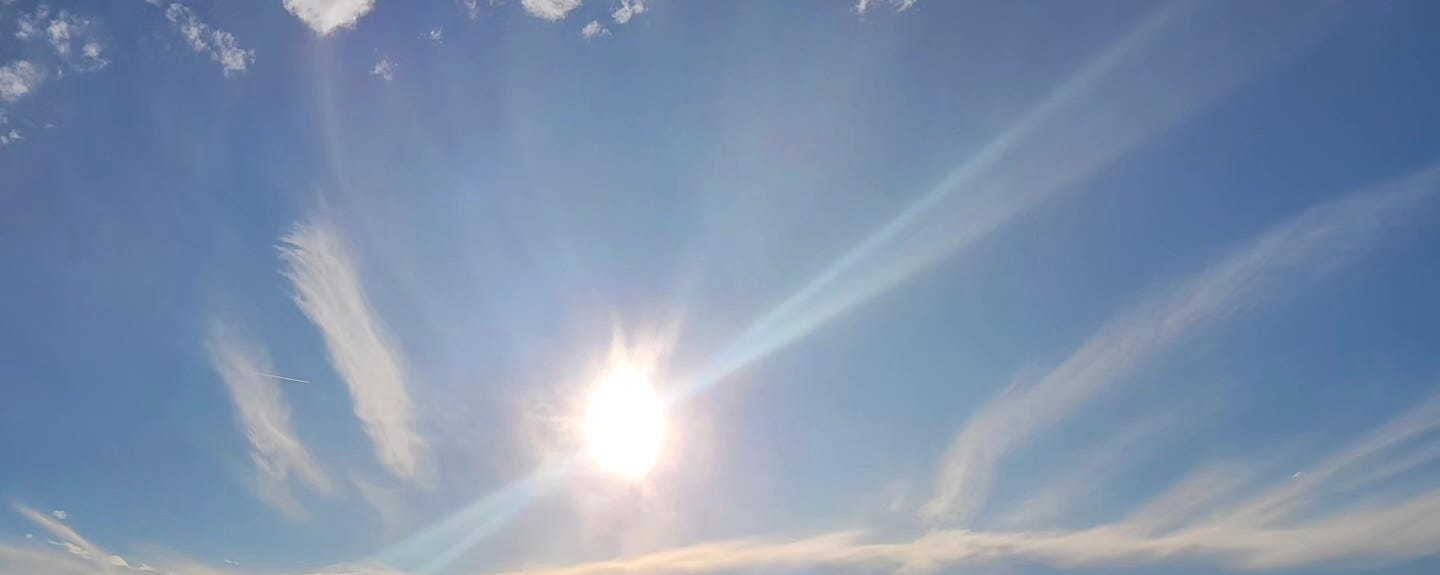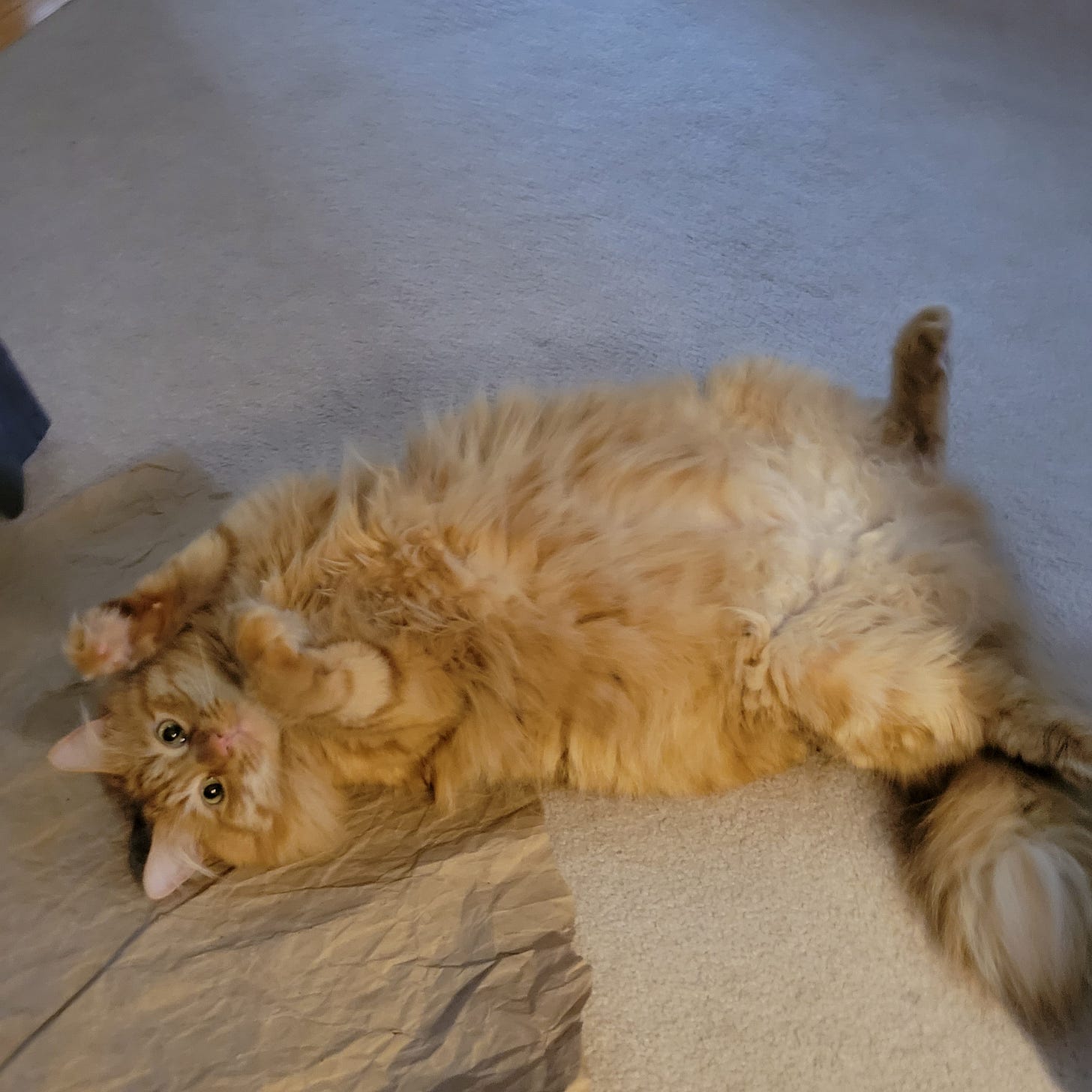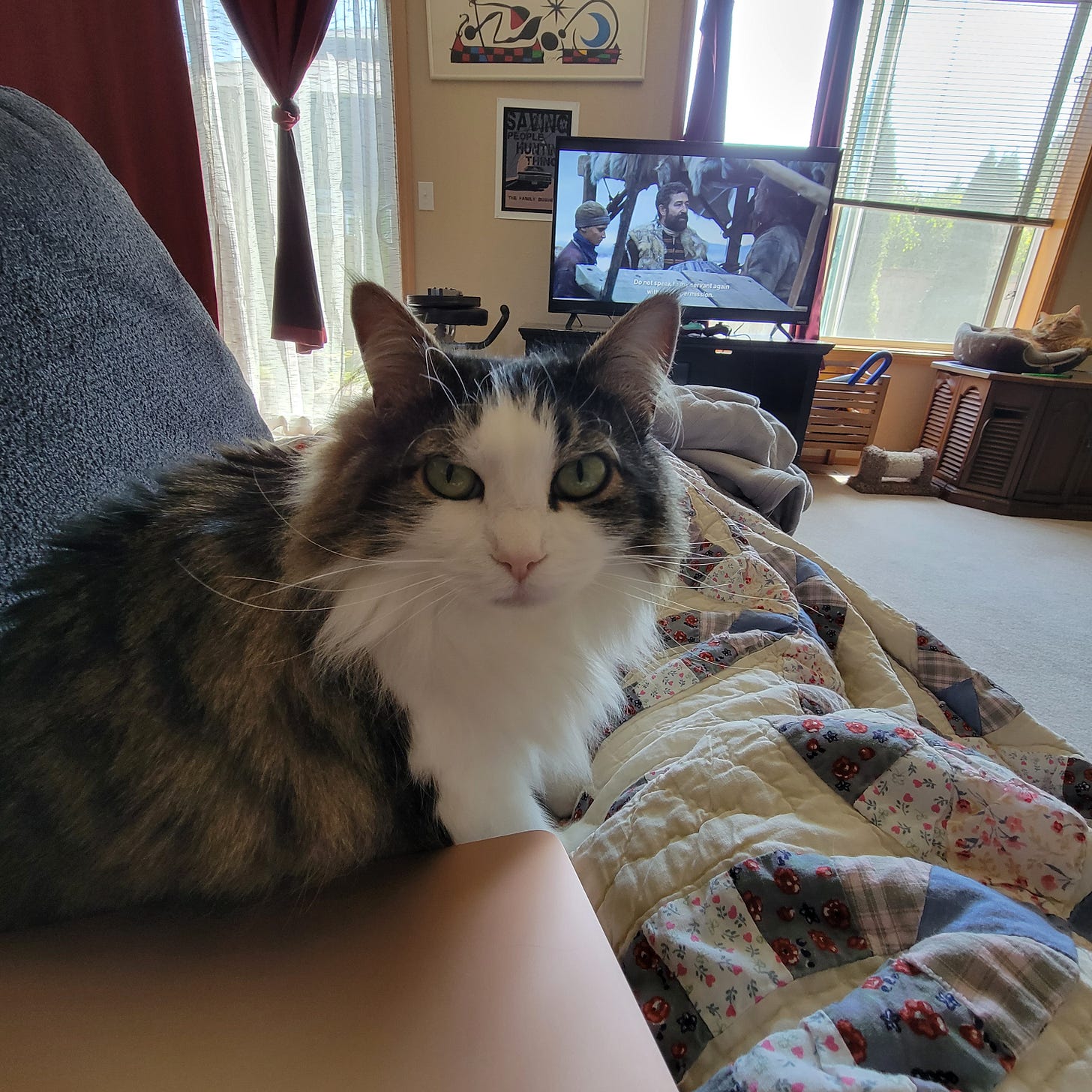Reflections on Character voice
Reflecting on character and setting brainstorm
Reflection on journal entries 4/22/23: one-page, writing chores, and a creative brainstorm
So normally, this reflections post is for paid subscribers only, but I want to do at least one free reflections post a month. So, feel free to read through about my thoughts and feelings around last week’s post.
One-Page
So, if you didn’t know what a one-page is, it’s a single page in my journal I use for just writing whatever is present or up front in my mind. That day it seemed to be nature and cats, which is usually what’s on my mind.
I have two wonderful cats that occupy a fair amount of brain and heart space. Even now, there is one curled up behind my desk on the chair they love to sleep on. Cats always feel like literary pets. It’s not why I have cats, but they just have this very bookish quality about them.
When I grew up with dogs, only one of them would sit still with me while I read or wrote. All the other dogs of my life, ran or growled at me, but my favorite and bestest boy, Igby, was a dutiful dog that liked hanging out beneath the blanket while I read a book or wrote in my journal.
Pets don’t usually show up in my stories unless they are a part of the narrative. As a reader, I love when they come up in stories and have nothing to do with the plot or story and act more like a static character or sidekick. I recently read The House in the Cerulean Sea by TJ Klune that has a wonderful cat character, Calliope, that added color and humor to the story.
I think I’ll slowly start working pets and nature in general more and more into my writing. Not just in funny and heartwarming ways like Klune’s novel, but also in darker and more intense ways like The Last House on Needless Street by Catriona Ward. That’s why I spend a lot of time reading nature books like the Best Science and Nature Essays 2022.
The most recent stories I’ve written—one of which I just sold to a dream horror magazine!—are all based in nature in some way. There’s a story about a creature born from shamed woods; one about a forest spirit that eats the sadness of children and replaces them with something dark and empty; and one set in my own childhood woods of New Jersey.
One of those stories does use the dark force in a forest idea but not in a way that represents climate change. It instead focuses on depression in children and teenage suicide. And the dark force is nothing like the monster in Ferngully. A part of me is a little sad about that. That monster is fantastic.
But I am pleased with the story and how it came out. It’s dark, scary, and sad. It talks about a difficult subject in a way that, I hope, shines light on the ramifications of those left behind and the emotions felt by those going through this struggle.
I’m still working on story edits and need to put it through several critique sessions with my writing group. When it’s ready, though, I’ll be submitting it out to magazines and shopping it around to editors. Hopefully, you’ll be able to read that novelette soon.
What I Will Do From My Stack
I will sometimes have to take a step back and assess what I need to do in a day to be a writer. Or not be a writer, but what do I need to do to make sure at the end of the day I’ve done things that make me feel like I’ve had a writer’s day.
It sounds silly because I am a professional writer whose every day is a writer’s day. But sometimes I need to write down what I want to do that day to really feel like the writer I want to be. Sometimes it’s writing things or editing stories or connecting with other writers.
This day seems like it’s all about being out and open. Pay attention. Write down what I see. Question it and try to see what’s under the surface.
Then there is the Writing Wilderness project. This is something new, something I’m still working on figuring out how to make happen. Writing Wilderness is my YouTube channel where I explore two things: writing and the wilderness/open road.
I’ve wanted to get into making writing videos for some years now, but don’t have the time in my schedule to commit to such a large project, so instead, I’m sort of building out a plan so that when I do get that space, I’ll have some sort of framework and topics to work with.
We’ll see if it ever comes to fruition.
I am a very committed person who does usually write all of the stories and projects I set out to or think up. But I am also a writer who has a five year plan worth of projects and focus areas that I work through to help me reach the particular creative and career heights I have in mind.
The other item from this list that stood our was the ‘Finish description excel sheet exercise.’ I had totally forgotten about this writing exercise, but it was one that as soon as I saw it on the list popped into my mind as an ah-ha moment.
Unfortunately, I can’t find my write up of the exercise and my responses, but! it was from one of my favorite craft books that I recommend to any writer who wants to be better at sentence crafting, descriptions, and emotional writing—Spellbinding Sentences by Barbara Baig.
Baig is a phenomenal writing instructor. If you write and want to get better at it through deliberate practice and story analysis, her website Where Writers Learn is a great resource.
Surprise Poem
One of my favorite things about my writing style is that it’s poetic. There’s a rhythm to it. The lines put in work. But the words have a mad sort of relationship with one another. Something that is more common in poetry and less in fiction.
It’s something I take great pride and appreciation in because I know not every fiction writer has a poet’s hand/ear.
I’ve written poetry for longer than I’ve written fiction. But it took a lot of practice to get me to the point where I could blend poetry with my fiction or even my nonfiction.
Sadly, though, I don’t write as much poetry as I used to. I still try and work a poem into my journaling routine whenever I can and sometimes it happens randomly at the bottom of the page when I have a few extra lines.
I don’t like this poem nor do I think it is good. And that’s a part of the practice. Write a poem even if its not good. Write a story even if its not good. It’s okay to be bad at writing.
It’s okay to be bad at writing even as a professional writer.
I kinda need to remind myself that more and more as I grow deeper into my career and experiment more with story and words.
Darling Setting Free Write - Voice of Miracle
!!!!!
Oh, Miracle. Oh, Darling.
This is a tiny tiny look inside the current book I’m researching and planning. I’ve written about it a bit on my blog, but it’s a horror thriller about a small Nevada town and a addict named Miracle coming home to solve some murders and put some ghosts to rest.
Since I’m just in the planning stages now, one of the exercises I like to do (also from Spellbinding Sentences) is to get into the mind of the character and focus on one or two senses or emotions while they are doing something. It works to give me a view of the setting and it also helps me figure out the voice.
Character voice, at least for me and my writing, is the most important thing I need to nail to make the story sing. If I don’t know how the character/narrator who’s telling the story sounds, then I don’t know how the story will unfold. The way someone talks and thinks dictates how the story moves from beginning to end.
That’s what I’ve found in my writing so far at least.
And Miracle is one of those people who likes to talk but doesn’t say anything at all. She rambles through memories and time and only sees the present as this fast moving bullet rushing away from her. She also hates her home, Darling.
But Darling is a town both worth hating and loving. I’m starting to see that as I explore more parts of the town through various characters and their histories.
It’ll be probably a year or so before Miracle and Darling and all them damn ghosts are finally down on the page and in a shareable form. My plan is to query it to some agents who have asked for longer form horror novels from me and see if I get any takers. Honestly, though, I’m just excited to get to know these people and this place.
Did you enjoy this reflection?



